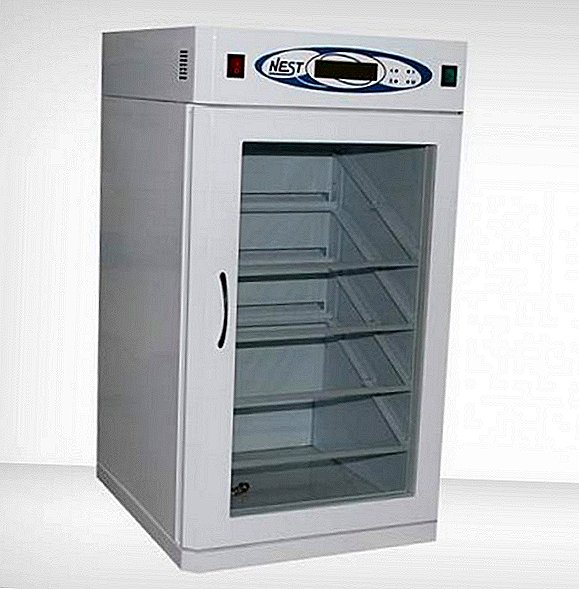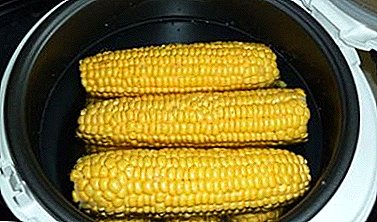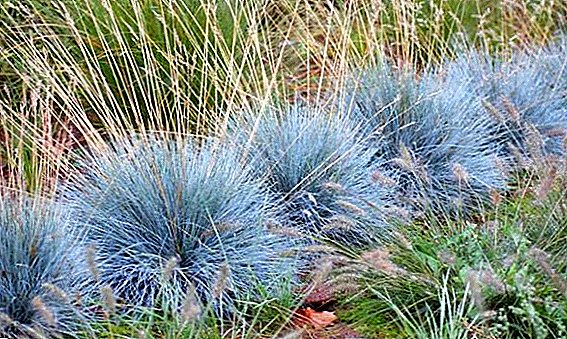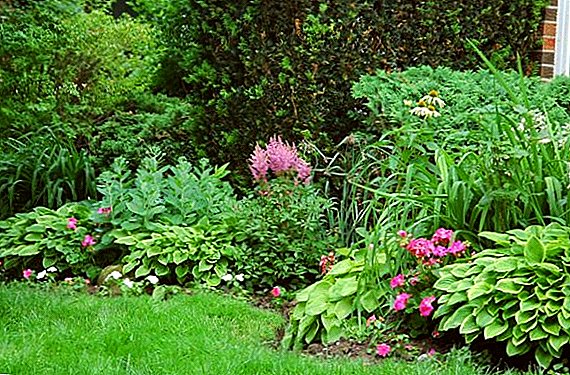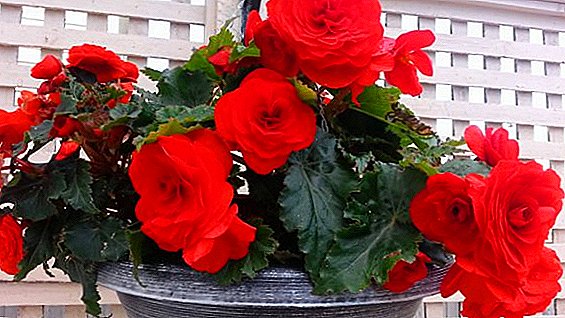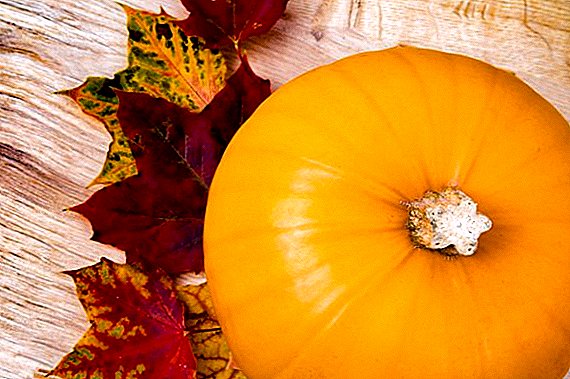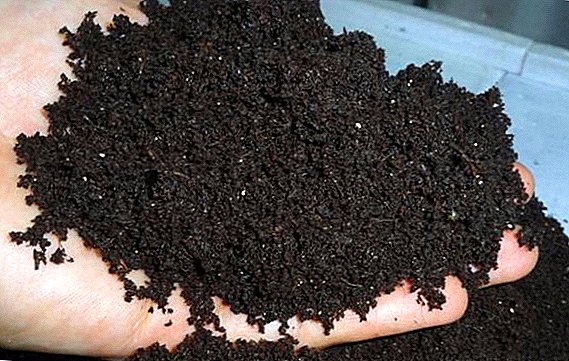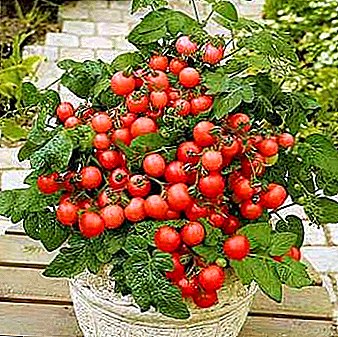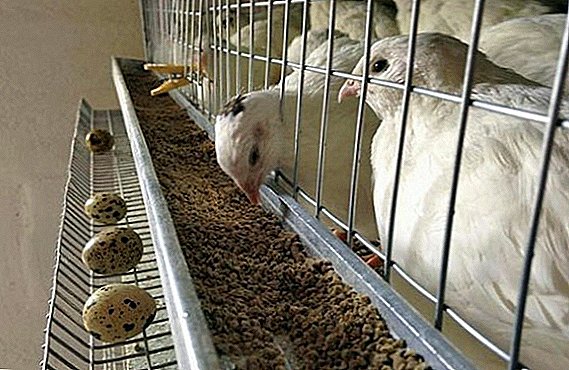 In spring, when nature awakens, summer residents also become more active, because for them it is a hot time. In order to get a rich harvest in the fall, you should prepare the soil for bedding in early spring, including picking up the correct fertilizers and observing the right dosages.
In spring, when nature awakens, summer residents also become more active, because for them it is a hot time. In order to get a rich harvest in the fall, you should prepare the soil for bedding in early spring, including picking up the correct fertilizers and observing the right dosages.
It is important to take into account the needs of garden crops that will be planted on the site. And if for experienced gardeners such a process is not difficult, then for beginners in this business it is difficult to choose the right top dressing.
The need for annual fertilization of the soil is based on the constant depletion of land resources. If you do not enrich the site with nutrients, yields will rapidly decline from year to year. In this article we will understand what fertilizers are most needed in the spring for the garden.
Each crop has its own preferences in top dressing, so it is important to know how to fertilize tomatoes, eggplants, peppers, carrots, onions, garlic, cabbage, cucumbers, strawberries, grapes, beets, currants, gooseberries.

When to make?
According to experts, it is best to fertilize the area for planting on it in the spring. In this case, previously prepared organic supplements are used, as well as strictly dosed mineral complex products. You can start fertilizing the land immediately after the snow melts. Some amateur gardeners fertilize the area on top of the snow, but the effectiveness of this method is low, because together with the melted snow, the introduced substances can easily “float away” from the land plot.
In order not to forget about what and where you need to make fertilizer, it is best to make a kind of plan. So all cultures are guaranteed to receive the proper amount of nutrients in the recommended amount.
Important! Top dressing is not the case when it is necessary to follow the principle “the more - the better”. The abundance of both mineral and organic elements in the soil can adversely affect the state and development of the crops growing there. Mineral and mixed fertilizers require particular accuracy in dosages.

What to fertilize?
In the spring, the development of plant crops is just beginning, so they absorb nutrients and substances from the ground as much as possible. Accordingly, their growth will be significantly slowed down if the land is depleted, and a number of varieties do not bear fruit in such conditions.
If fertilizers are applied to the cottage in spring, it is possible not only to improve the growth of garden residents, but also to significantly increase the level of their productivity. There will also be a noticeable improvement in the quality of the growing fruits. Fertilizers are divided into two main types: organic and mineral. We will analyze each of them.
Did you know? Fertilizers that were obtained directly in the farms are called local. These include peat, manure, ash, compost. Those that were obtained at chemical plants are called industrial.

Organics
Organic fertilizers are of two types: vegetable origin and animal. Vegetable fertilizer is peat and compost, animal - bird droppings and manure. If you fertilize the soil with organic matter, then, among other things, you can also significantly improve its structure, which will contribute to the formation and reproduction of organisms that will be useful to both the soil and the plants.
There are also drawbacks. In particular, there may be an imbalance of nutrients. Also in this form of fertilizing can be weed seeds, and even organic can sometimes cause diseases of plant crops and be a kind of magnet for toxins. However, organic fertilizers do not lose their popularity, because the benefits of them are much more than harm.
When choosing organic highly recommended to use compost. Any gardener can prepare it. To do this, on a plot of 10 square meters. m. should be scattered straw, the thickness of the layer should be about 15 cm. On top of it lay a layer of manure 20 cm thick, and at the end - a 20-centimeter layer of peat.
You can sprinkle it all with lime and phosphate flour, at the rate of 55-60 g of the mixture per 1 square meter. m. On top you need to once again lay out a layer of manure and cover all layers with a thin ball of soil. After 7-8 months, an effective organic fertilizer will be ready for use. 
Important! Fresh manure is not a good type of garden manure. The fact is that when manure enters the moist and warm soil, it actively begins to decompose, resulting in heat release. Because of this, the entire crop can simply "burn." That is why fresh manure is used only as a fertilizer of strong crops, while it is bred in water and only then water between the rows. You can also first dry the manure, and then spill it between the rows with a thin layer.Another way to apply manure to the soil in the spring is to age for a year. Reclining, it is converted into humus. But here it is worth remembering that manure, like chicken dung, decomposes better when it is not in its pure form, but mixed with leaves, straw or sawdust.
It is known that in organics only a small part of nitrogen is soluble. After the compost is placed in the ground, it is attacked by myriads of the inhabitants of the earth, who eat it, transforming the compost and decomposing it. It is thanks to such actions of microorganisms that the nitrogen from the insoluble form becomes soluble, after which everything depends on the growth of the ground part of the plant culture. For example, potatoes rather quickly absorb nitrogen, which was prepared for it by microorganisms, which cannot be said about carrots. At first it grows slowly, and only in the middle of July does its rapid leafy growth begin. Based on such data, and you need to build a chart feeding.
Minerals
With mineral fertilizers it is usually much easier to work than with organic ones. They are on sale immediately in a finished, concentrated form. In addition, the package always has instructions, where there are useful recommendations on the use of the drug and the exact dosage. However, care must be taken here. It should focus on the needs of the garden crop, as well as on the features of the site itself.
Some gardeners are very critical of mineral fertilizers, based on the fact that this is "chemistry" and only harm to the site and crops. One cannot but agree that the structure of the soil is really not improved from minerals, only organic is needed here. But a significant advantage of the mineral type of fertilizer is that the plants will have direct access to the group of all necessary substances, nitrogen and phosphorus in particular.
To date, the list of complex mineral fertilizers is quite large, only a small part - Akvarin, Kalimag, Kalimagneziya, Plantafol, Crystalon, Kemira Lux, Ammophos, Signore Tomato, Stimul, Calcium Nitrate, Azofoska, Potassium chloride, Iron chelate.And drugs that have potassium in their composition will very effectively affect the rate of fruit ripening. If you apply a comprehensive tool, which includes 2 or more elements, it will be able to fully meet the needs of vegetables in nutrients.
 To make granulated nitrogen and phosphate fertilizers should be in the soil before digging. So beneficial substances will be located as close as possible to the roots of plants. The depth recommended for adherence is about 20 cm.
To make granulated nitrogen and phosphate fertilizers should be in the soil before digging. So beneficial substances will be located as close as possible to the roots of plants. The depth recommended for adherence is about 20 cm.What kind of mineral fertilizers summer residents bring in the spring depends on the type of site and the varieties of crops that will be planted there. Complex preparations are presented for sale in the form of a liquid and in the form of granules. It is necessary to use the granulated means, precisely observing a dosage.
Usually on a plot of 10 square meters. m. should be applied 300-350 g of nitrogen supplements (urea, ammonium nitrate), you also need to make about 250 g of phosphate fertilizer and 200 g of potash fertilizer. The latter, by the way, is quite acceptable to replace with ordinary wood ash.
Superphosphate in granules is a universal phosphorus-nitrogen fertilizer that can be applied to almost all types of soil and provide food for the garden of any summer resident.
Mineral fertilizers should be applied to the soil every year. One cannot but agree that it will be necessary to allocate certain funds from the family budget for this, but the returns from such financial and labor investments will not have to wait long. After all, in the fall the garden plot will please the owner with a rich and high-quality harvest.
Did you know? According to Rosstat, in the Russian Federation, agricultural enterprises, in 1990, 9.9 million tons of fertilizers were applied, and in 2010 - 1.9 million tons. As can be seen, the amount of mineral fertilizers used has decreased by 5 times over 20 years .
Signs of fertilizer shortages
It is quite difficult for novice gardeners to determine which fertilizers plants lack. To help give a number of signs by which you can understand what kind of dressing should further enrich the soil.
- If the foliage of plants is pale, begins to turn yellow, and sometimes even acquire a pinkish color, this may indicate a shortage nitrogen. Such a plant grows slowly, does not bloom, the leaves can curl and fall off.
- If the leaves of plant culture are bent upwards, become purple or bluish, the soil should be enriched. phosphorus.
- Soil deficiency indicator potassium there will be peculiar burns at the edges of the leaflets. The leaves in this case gradually frown and wrap down. In such conditions, the culture may bloom, but the flowers quickly fall off, resulting in very little fruit.
- If the leaves began to turn yellow at the edges, then the ground should be fertilized. magnesium.
- Small, elongated, pointed leaves, which are covered with dark spots - this is a clear signal of a shortage in the soil zinc. The foliage of some varieties of garden crops may initially turn yellow, and over time acquire a brown color.
- White tips of leaves - a sign of lack copper.


